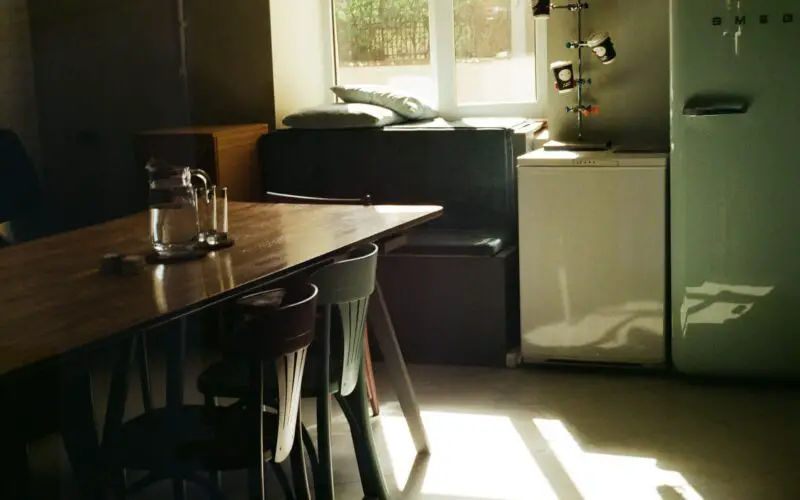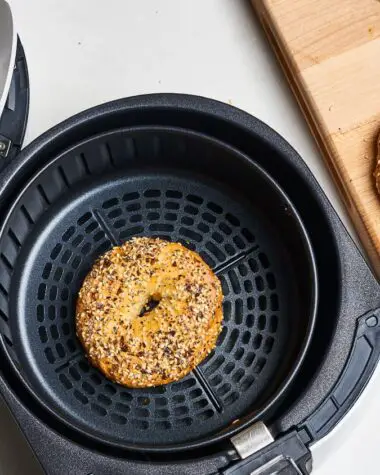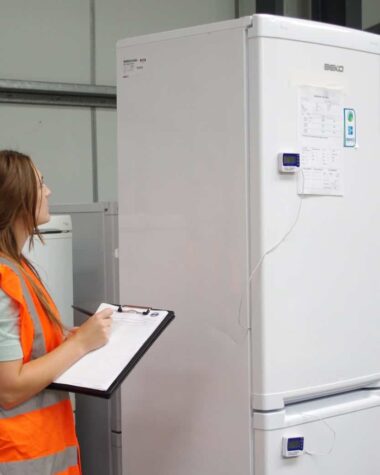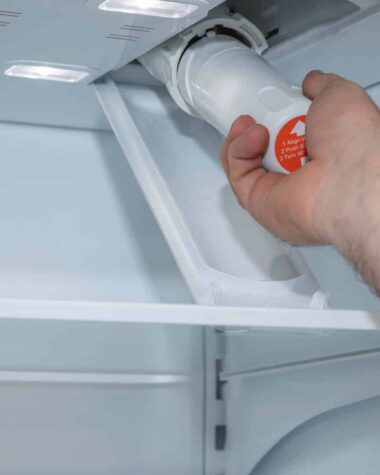Is your food becoming spoiled quicker than it normally should? Do you find it difficult to appreciate a cool brew on a hot summer day because it’s so warm? Suppose you are familiar with how long leftover foods ought to stay fresh and how long food should be kept inside your refrigerator. In that case, your food is still becoming spoiled, and the refrigerator’s temperature settings might have gotten too warm.
And even a top-of-the-line 30-inch refrigerator with all amenities might wind up having food waste if the ambient temperature settings are wrong. So, when you notice your vegetables and cheese decreasing in quality, it may be time to double-check the temperature of your refrigerator. If you don’t know how to preserve food but want to know the appropriate temperature for a freezer or refrigerator compartment, DaDongNy has you covered.
Starting With The Freezer Compartment
Adjusting the temperature of your freezer is the simplest task. According to the U.S. Department of Agriculture (USDA), your freezer should be maintained at around 0 ° F in order to decrease the metabolic rate of decomposition and retain the nutritious content of your foods.
To avoid wasting food in your freezer, put everything in a tightly sealed container and mark everything to ensure you can consume it when the freezer burns.
Food Storage Guidelines For Your Freezer
If you’re not sure how to properly freeze your food, here are some guidelines to keep in mind:
- Refrigerate The Food Before Freezing It
Freezing warm foods increases the ambient temperature inside your freezer and may cause other meals to thaw. The chilling process can be sped up by dividing the meal into smaller portions.
This May Also Interest You: Why You Should Thaw Your Turkey In The Refrigerator Just In Time For Thanksgiving
- Securely Wrap The Food Or Store It In Sealed Containers
Food can suffer freezer burn if it is not sealed tightly enough. This indicates that moisture escapes from the contents and travels towards the coldest area of the freezer compartment, dehydrating everything. While this degrades the food’s quality, it is still safe for human consumption.
- Freeze Food In Reasonable-Sized Proportions
When you’re just providing for a family of three, we highly discourage you from warming up a stew that is big enough for at least eight servings.
- Label Anything You Put In The Freezer
If you don’t precisely pinpoint foods or ingredients, you can forget which they are, not to mention the moment you freeze them. Get a color-coded food marker for uncooked foods and cooked meals, including the day when it was frozen at all times.
- Check The Expiration Date
Food that has passed its use-by date shouldn’t be stored in the freezer compartment, given that it has become unsafe for consumption.
- Don’t Let The Ice Accumulate
Since the freezer compartment can be inefficient, make sure that you defrost it once you notice some ice accumulation. Don’t worry about the food; it will likely stay frozen in the refrigerator for a few hours while defrosting.
This May Also Interest You: Refrigerator Life Hacks: 8 Steps For Safely And Quickly Defrosting Your Appliance
- When In Doubt, Dump It
Bacteria do not die when they are frozen. So, if you are unsure how long anything has been frozen or are afraid of what might happen once defrosted, don’t take any chances and throw the food away immediately.
- To freeze vegetables that are freshly bought, follow these procedures:
- Using a pot of hot water, cook a few vegetables once for 30 seconds. This will keep them from turning brown when frozen.
- Blanch them by tossing them into a bowl of iced water.
- After the vegetables have chilled, drain them and place them on a tray coated with kitchen paper.
- Place them in a freezer bag after you have frozen them on the tray.
- Cook the frozen vegetables in a big pot of boiling water since they become soggy if steamed.
Foods That Can And Cannot Be Frozen
While some goods can be stored in the freezer section, others could be more freezer-friendly. To reduce food waste, it is critical to determine which one is appropriate.
| Freezer-Friendly Food | Not Freezer-Friendly Foods |
| Meat Poultry Seafood Frozen food Soups, stews and casseroles Milk Butter Cheese Vegetable Raw egg (white and yolk separated) Cakes and baked goods | Foods with a crumbs-based crust High-water-content vegetables and fruits Soft herbs Egg- and milk-based sauces Raw egg (in shell) Hard-boiled eggs Canned foods |
And now comes the tricky part; the refrigerator compartment.
The Ideal Temperature For A Refrigerator To Work Well
Typically, the internal environment of a refrigerator has a temperature that ranges between 37 and 41 ° F. According to the U.S. News, the optimal temperature of this appliance should be set at or below 40 ° F. However, effective preservation is more than simply maintaining the temperature, so there are some important points to keep in mind.
To start things off, the temperature in every compartment of your refrigerator will be different. The bottom of your fridge usually has the lowest temperatures, and as you climb, the temperature rises. For example, the average temperature on the middle shelf is approximately 41 ° F, though the lowest shelves tend to be colder, at approximately 36 ° F.
This is why foods and beverages should be placed in distinct compartments in accordance with their environmental temperature needed to keep them fresh and chilled.
| Items | Location |
|---|---|
| Vegetables | Bottom drawers |
| Fresh produces | Bottom drawers |
| Meats | Lower shelf |
| Seafoods | Lower shelf |
| Dairy products | Middle shelf |
| Deli products | Middle shelf |
| Pre-cooked meals | Top shelf |
| Ready-to-eat meals | Top shelf |
Misplacing your food inside the refrigerator could result in spoilage due to overcooling as well as undercooling. In addition, avoid storing items that are delicate on the refrigerator door, where temperatures are more susceptible to fluctuation.
If you want additional control, a variety of refrigerator brands on the market offer models with specific drawers and compartments with greater temperature ranges and better humidity management.
Food Storage Guidelines For Your Refrigerator
If you need help properly refrigerating your food, these are the recommended practices to keep your fridge in good working order and your food fresh.
- Know how to clean your refrigerator in order to prevent bacteria growth or off-putting spills and odors inside.
- Get a refrigerator thermometer so you can always check the ambient temperature and carry out any required modifications if necessary.
- Keep in mind to shut the door when not in use. Leaving the door open as you grab some snacks or unpack groceries harms the refrigerator and its components.
- Distribute your food properly. Keeping your food spread out will allow air to flow freely throughout the refrigerator as well as the freezer compartment. A refrigeration unit that is entirely full of items is prone to have been warmer than one that is empty.
- Clean out your coils. Your refrigerator, like other appliances, may require a little attention from time to time. To avoid refrigerator repairs, clean the condenser coils at least every twelve months.
This May Also Interest You: Five Refreshing Steps On How To Clean Your Refrigerator Condenser Coils
- Use humidity-controlled fruit and vegetable storage compartments and store food in sealed storage containers to minimize the amount of moisture entering the refrigerator.
- Allow food to cool down before placing it in the refrigerator in order to avoid warming up the area around it, causing bacterial growth.
The Influence of Where You Live on the Environmental Temperature within Your Refrigerator
Whether you are located in a hot or cold region, the temperature range of 37 to 40°F is a standard configuration for accurate refrigeration. Having said that, weather conditions could have an impact on your settings. The amount of effort the refrigerator must put into maintaining the appropriate temperature could be affected by the weather, which may also influence energy consumption and your monthly expenses.
The Repercussions Of Your Refrigerator’s Temperature On Food And Contents
The ambient temperature inside your refrigerator can affect how long your food lasts, and it can also impact the quality and freshness. Your food could break down quickly if you set the wrong temperature.
Overcrowding your refrigerator can heavily affect the temperature level of any refrigerator unit. Understand that refrigerators are not designed to be full. The lack of space inside the refrigerator may hinder the cold air from getting around, causing food to decay faster.
So, What Temperature Does Food Spoil In A Refrigerator
Even if your food has been exposed for a short time, food degradation occurs when the room temperature inside of your refrigerator hits 40 °F. Perishable foods such as eggs, seafood, poultry, and meat usually rot first. On the other hand, dairy products including milk, yogurt, and cheese fall apart faster when compared to other food.
Taking The Accurate Temperature Measurement Of Your Refrigerator
As much as we hate to be the bearer of bad news, but not all refrigerator temperature gauges are reliable. Your appliance could be set to 37°F, however it’s usually rendering temperatures around 33°F or as high as 41°F. Although, It’s quite common for refrigerator models to keep things a few degrees warmer than the temperature you set in place.
In addition, some refrigerators do not display temperatures at all. They allow you to set the temperature of the refrigerator on a scale of one to five, with five being the warmest setting. You won’t be able to determine exactly these milestones meant when it comes to temperatures unless you have a thermometer at your disposal.
You can acquire an affordable refrigerator thermometer online for only $28.85 or at any home improvement store near you. Put the thermometer inside the refrigerator or freezer compartment for 20 minutes. Afterwards, double-check the reading and see if you’re near the optimal or recommended temperature.
If not, change the temperature of your refrigerator and keep it between 35° and 38°F with the help of the temperature control panel on the refrigeration unit. Do the same thing In your free time, aiming for a temperature as near to 0°F as possible.
FAQs
- Is 37 °F Cool Enough For My Refrigerator?
To put it simply, yes. 37 °F is the optimal temperature for an average residential refrigerator because it is colder than the bacteria growth danger zone minimum. It is perfect since it maintains food at a suitable temperature while not being so chilly that your food starts to freeze.
However, if you’re wondering what temperature your wine refrigerator should be set to, 37 °F is far too cold.
- Is 45 °F A Safe Refrigerator Temperature?
Setting the temperature over 40 °F might allow bacteria to increase in your refrigerator, so it is highly discouraged. Even if your food is just exposed to a temperature within 45 °F for a short period of time, it is not safe.
- Why Is The Food In My Refrigerator Freezing?
If you opened your refrigerator and discovered your milk froze, your temperature is likely fixed excessively low (below 32°F ). It could also be that the temperature gauge on your appliance is defective. While these are the most common issues, you might have a faulty damper, filthy coils, or a damaged door gasket.
This May Also Interest You:
Bottomline
Keeping your refrigerator and freezer compartment at the right temperature level can affect how long your food lasts and how it tastes and is fresh. The things stored inside the appliance could get spoiled if not properly refrigerated. With the information and recommendations we’ve provided above, you should be able to deal with the problem.
If you cannot prevent your food from getting wasted, it’s time to hire someone with experience. Hire an established appliance service provider to evaluate your appliance and ensure it is working properly, or it’s time to replace it with a new one.
To learn more about refrigerators and how this valuable piece of equipment chills the food and beverages inside, including your breast milk, check out the post here.
Articles You May Be Interested In
- A Cooler Choice: Whirlpool v.s GE Refrigerators (Full Guide)
- Refrigerator Check: LG v.s Samsung Refrigerators (Full Guide)
- Cool Tech Showdown: Frigidaire v.s Whirlpool Refrigerators (Full Guide)
- Fridge Favorites: Bosch v.s LG Refrigerators (Full Guide)
- Cooling Conundrum: Whirlpool v.s Samsung Refrigerators (Full Guide)
- Tale Of The Tape: Maytag v.s Whirlpool Refrigerators (Full Guide)
- Fridges in Focus: Thermador v.s Sub-Zero Refrigerators (Full Guide)
- Fridge Frenzy: Sub-Zero v.s Viking Refrigerators (Full Guide)
- The Big Chill: Whirlpool v.s KitchenAid Refrigerators (Full Guide)
- Refrigerator Bout: Whirlpool v.s LG Refrigerators (Full Guide)









